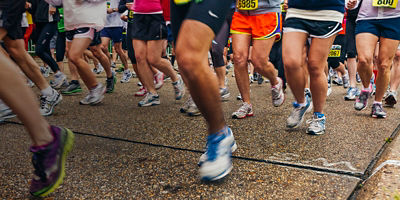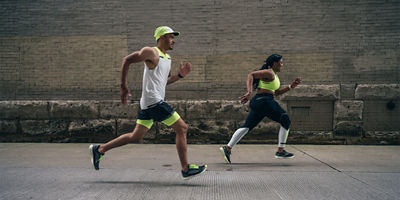
Perhaps you’ve spent a day hiking, running or mountain biking on the trails, maybe even paddling on a lake or river. Your body could use some love, as could your mind. Practicing yoga is a proven way to unwind after a day spent charging outdoors, or to recuperate in camp between more adventurous outings. That doesn’t mean you need to hunt down a yoga studio; it’s more than possible to effectively practice yoga outdoors among the trees and the breeze.
Besides having some knowledge of how to safely do yoga plus the body awareness to not push beyond your limits, all you really need to practice outdoors is a flat space. Depending on the surface, you may opt to use a yoga mat to soften the ground beneath you and maintain your footing (towels and blankets tend to feel slippery; they can also bunch up). A handful of other gear items can increase your comfort. From there, the progression of postures, or flow, that you choose to do may depend on what your body or your mind—or both—are craving based on the activities you’ve been doing. Here’s a guide to help you enjoy outdoor yoga, with tips on how to outfit and prepare along with some recommended poses to integrate into your next open-air sequence.
SURFACE CONSIDERATIONS
Grass
There’s a visceral connection to nature practicing yoga barefoot on grass. If you don’t mind the feeling of blades between your toes, do your standing postures barefoot. Once you move to seated postures or any poses on your back, you may want to lie on a mat, towel or blanket to avoid getting wet or becoming itchy.
Dirt
If you’re at a campsite or have a smooth patch of dirt in a backyard or other outdoor space, use it to practice yoga—at least the standing poses—while wearing shoes. Once you move to seated poses, consider using a blanket or towel (if you don’t mind getting dirty). You can also place a yoga mat on top of that towel or blanket for a stickier surface. Just know the balancing poses will be more challenging due to the softer/thicker surface beneath you.
Rock/Concrete/Asphalt
A hard surface of smooth, flat rock like you’d find in certain backcountry campsites in the Sierra Nevada range (oh, the granite) most closely mimics the floor of a yoga studio: smooth, hard, flat. On these surfaces, you’ll want a yoga mat. If you don’t have one, a towel or blanket can suffice, though they can also be slippery or bunch up. Still, they’re better than nothing, at least for seated poses.
OUTDOOR PRACTICE ESSENTIALS
A yoga mat is really the only specific piece of equipment you need for outdoor yoga, and even then, you can get by without one. Level up with a yoga-specific mat towel to increase padding and help you manage any added sweat from being out in the elements. Lightweight, compact travel yoga mats can also come in handy for those on the move who want to take their yoga practice with them, especially outdoors.
You can get creative with props for outdoor yoga: substituting a water bottle for a block; a towel or long-sleeved shirt for a yoga strap; and a pillow, a rolled-up blanket or a camping sleeping pad for a bolster.
Apps, like CorePower On Demand, Glo, or Gaia, can serve you well if you’re doing yoga outdoors near a wireless connection, or offline with a class that you’ve downloaded ahead of time. Place your smartphone, tablet, or laptop on a camp chair, table, tree trunk or the like, and enjoy guidance from a yoga instructor.



























